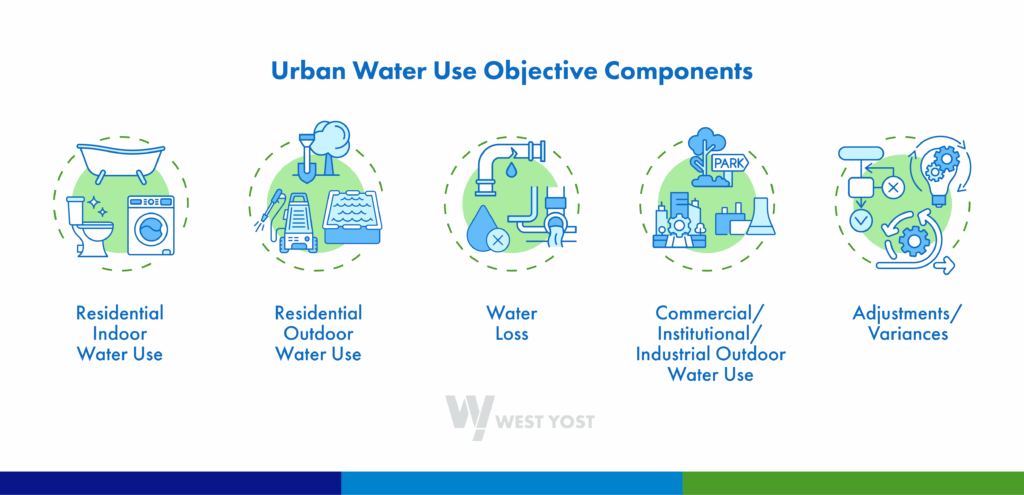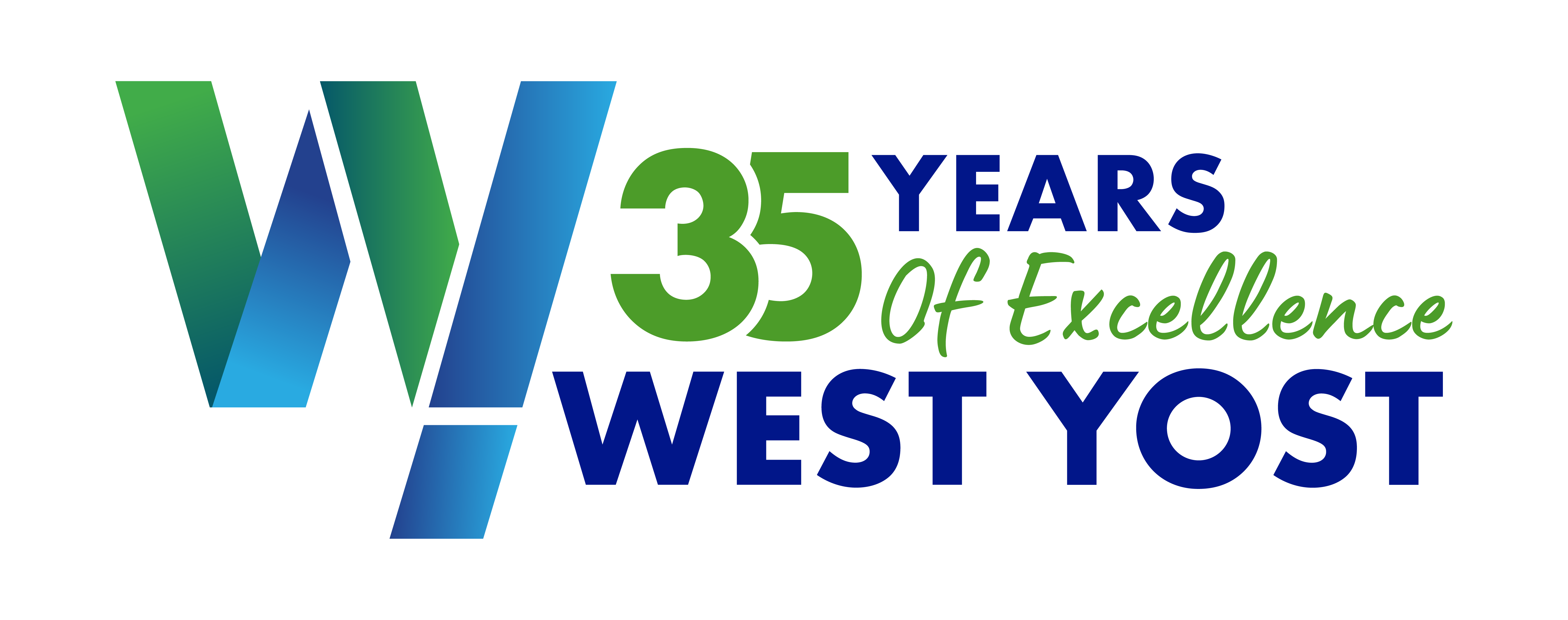Understanding Urban Water Management Planning

By: Bonnie Robison, PE, Engineer, Water Sector
This article contains and answers the following:
- Urban Water Management Plan (UWMP): Meeting California Water Code requirements
- Water supply reliability: Water supply planning for the next 20 years
- Making Conservation a California Way of Life: Urban water use objectives and water loss standards
- What is an Urban Water Management Plan (UWMP) in California?
- What are the new requirements for the 2025 UWMP?
- How do Urban Water Use Objectives affect water suppliers?
In 1983, the State of California established the Urban Water Management Planning Act (Act) following the severe drought of 1976-1977. The Act requires urban water suppliers to prepare Urban Water Management Plans (UWMPs) every five years to evaluate long-term water supply and demand. These plans aid in long-term resource planning, evaluate the reliability of water sources, outline demand management strategies, and document progress toward reducing per capita water consumption. UWMPs are essential to local, regional, and statewide water planning initiatives and help ensure that California’s urban water suppliers can provide reliable water supplies during normal, dry, and multiple dry years.
Significant revisions and expansions have been made to the Act since 1983, with the most significant changes taking place in 2009 (Senate Bill X7-7) and 2018 (SB 606 and AB 1668) following major statewide droughts. West Yost team members have prepared UWMPs with every cycle since 2000 and continue to stay current with the regulations as they are amended in response to changing climate conditions and growing population.
The next UWMP, the 2025 UWMP, is due on July 1, 2026.
Considerations Prior to UWMP Preparation
While no major changes are expected for the 2025 UWMP compared to the 2020 UWMP cycle, it is always important to review and update the information included to ensure it remains accurate and relevant. Key questions to consider before beginning the 2025 UWMP include:
- Water Use: Do water use projections need to be updated to align with updates to the local General Plan, Regional Housing Needs Allocation, or Water Master Plan?
- Water Supplies: What updates are needed for projected water supply availability?
- Are there changes to groundwater supply availability tied to groundwater management actions included in a groundwater sustainability plan?
- Have there been updates to local recycled water supply planning?
- How might the potential effects of the Bay-Delta Plan amendment have changed since preparation of the 2020 UWMP?
- How has water supply reliability changed since the 2020 UWMP? How reliable was the water supply during the 2021-2022 drought?
- Water Use Targets: How has per capita water use changed since 2020?
- Water Loss Standards: Have all recent annual water loss audits been completed? Have there been recent changes in annual water loss, and if so, why?
- Water Shortage Contingency Plan: How well did the Water Shortage Contingency Plan work during the 2021-2022 drought? Is there anything that could be improved?
- Supply Assessments: Will this UWMP be used as a foundational document for other planning efforts, such as water supply assessments?
For full requirements and guidance from the Department of Water Resources, visit its website.
Urban Water Management Plans are essential to local, regional, and statewide water planning initiatives.
Making Conservation a California Way of Life
On July 3, 2024, the State Water Resources Control Board adopted Urban Water Use Objective requirements as directed by the 2018 Making Conservation a California Way of Life legislation. These requirements build on the statewide 2020 water conservation targets set under Senate Bill X7-7 and provide a framework for long-term urban water use efficiency. As part of this regulation, urban water suppliers must meet annual urban water use objectives.
Beginning in 2024, urban water suppliers are required to submit an Annual Water Use Report to the state assessing their actual water use compared to their urban water use objective calculated for the previous fiscal year. The urban water use objective is a sum of water efficiency budgets for the following uses:

Each supplier calculates its urban water use objective using statewide efficiency standards, and considering the water service area population, climate, and landscape area. Efficiency standards for the different components will decrease over time through July 1, 2040. Although reporting on urban water use objectives is not anticipated to be required as part of the 2025 UWMP, suppliers should consider how the requirements overlap.
In addition to water loss incorporated into the urban water use objective, agencies are also required to separately comply with water loss standards set by the State Water Resources Control Board. Individual system standards were released in 2024 and are designed to enhance water use efficiency across the state. Progress on the complying with water loss standards by January 1, 2028, will be included in the 2025 UWMP.
West Yost has prepared UWMPs with every cycle since 2000.
West Yost Experience
The West Yost UWMP team prepared sixteen 2015 UWMPs and twenty-one 2020 UWMPs for urban water suppliers located throughout California. All were deemed complete by DWR without requiring any substantive revisions. Following preparation of UWMPs, West Yost has also supported agencies with related work, such as:
- Policy and code updates for consistency with:
- Water shortage contingency plans
- Water conservation plans
- Demand management measures
- Annual Water Supply and Demand Assessments
- Urban Water Use Objective planning
- SB 610 Water Supply Assessments and SB 221 Verifications of Sufficient Water Supply

Bonnie Robison
Bonnie is a civil engineer with a focus in water resource and water supply planning. Her project experience includes preparation of water system master plans, water supply assessments, urban water management plans, and hydraulic studies for new developments. She has previously worked in a municipal utilities department that provided potable water and wastewater services. While there, her project experience included preparation of water planning documents and project management for master planning, design, and construction projects.
